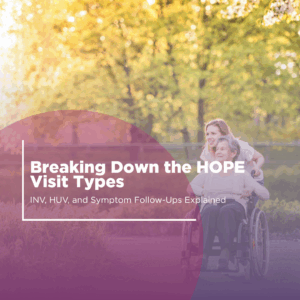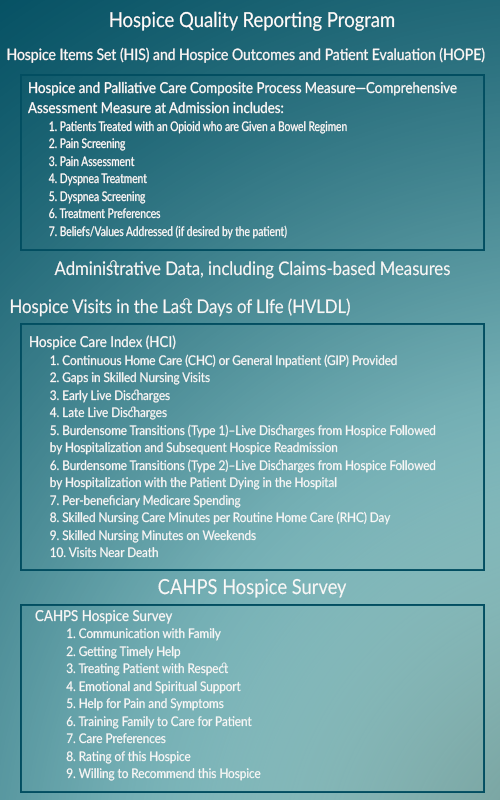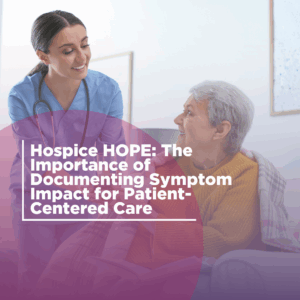HIS to HOPE Help
by Curantis Solutions
HIS to HOPE Help
HOPE visit types
The HOPE (Hospice Outcomes & Patient Evaluation) model introduces a new rhythm to hospice documentation, one that centers on the patient’s evolving experience of care. To meet HOPE’s standards with confidence, it’s critical to understand the different visit types and their timing.
Let’s break down the three visit types defined by HOPE: INV, HUV, and Symptom Follow-Ups, so your team knows exactly what’s required, when, and why it matters.

INV
Initial Nursing Visit
What it is: The first clinical touchpoint in the HOPE timeline. The INV marks the beginning of structured data collection and sets the baseline for all subsequent updates.
When it’s due: As soon as possible after admission, ideally within the first day.
What it captures:
- Key demographic and clinical data
- Initial symptom impact ratings
- Observations that may trigger a future follow-up
HUV
HOPE Update Visits
HUV1
When it’s due: Days 6–15 after admission
Purpose: Reassess symptoms and update the patient’s status.
HUV2
When it’s due: Days 16–30 after admission
Purpose: Continue tracking trends and changes, especially as patients stabilize or begin to decline.
Symptom Follow-Up Visits
What they are:
Special visits required when certain symptoms (e.g., pain, shortness of breath, anxiety) are rated as having a moderate or severe impact on the patient’s well-being.
When they’re due:
Time-sensitive, must occur within days of the symptom being flagged.
Why they matter:
These follow-ups are the heart of HOPE’s patient-centered approach. They ensure that care plans are adapted quickly and that patients don’t suffer in silence.
- Automatically evaluated after each visit
- Clearly flagged with alerts across the system
- Auto-documented into the HOPE record upon completion and QA
HOPE Hub
To support you every step of the way, Curantis Solutions has created the HOPE Hub—a dedicated resource center designed to guide your team through a seamless transition to HOPE-based documentation. For more HOPE Resources, visit here.
# # #
About Curantis Solutions

Curantis Solutions was born from a desire to put hospice and palliative care first. With a genuine culture of caring, our team is dedicated to creating a refreshingly simple software experience that utilizes emerging technology, smart design and a cloud-native/serverless architecture to create an experience that is congruent with the technology you utilize in your everyday life. It’s time for hospice and palliative care software to make life easier vs creating arduous workarounds and added frustration. It’s time you experience Curantis Solutions!










